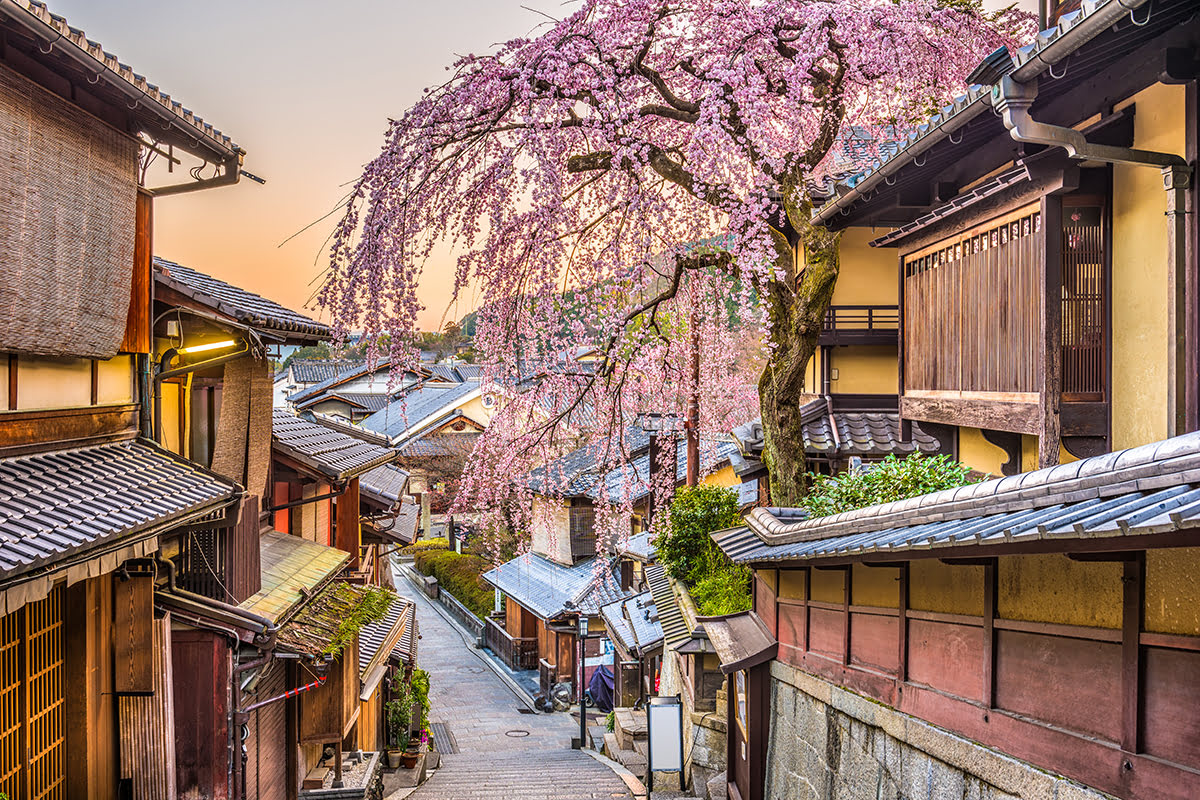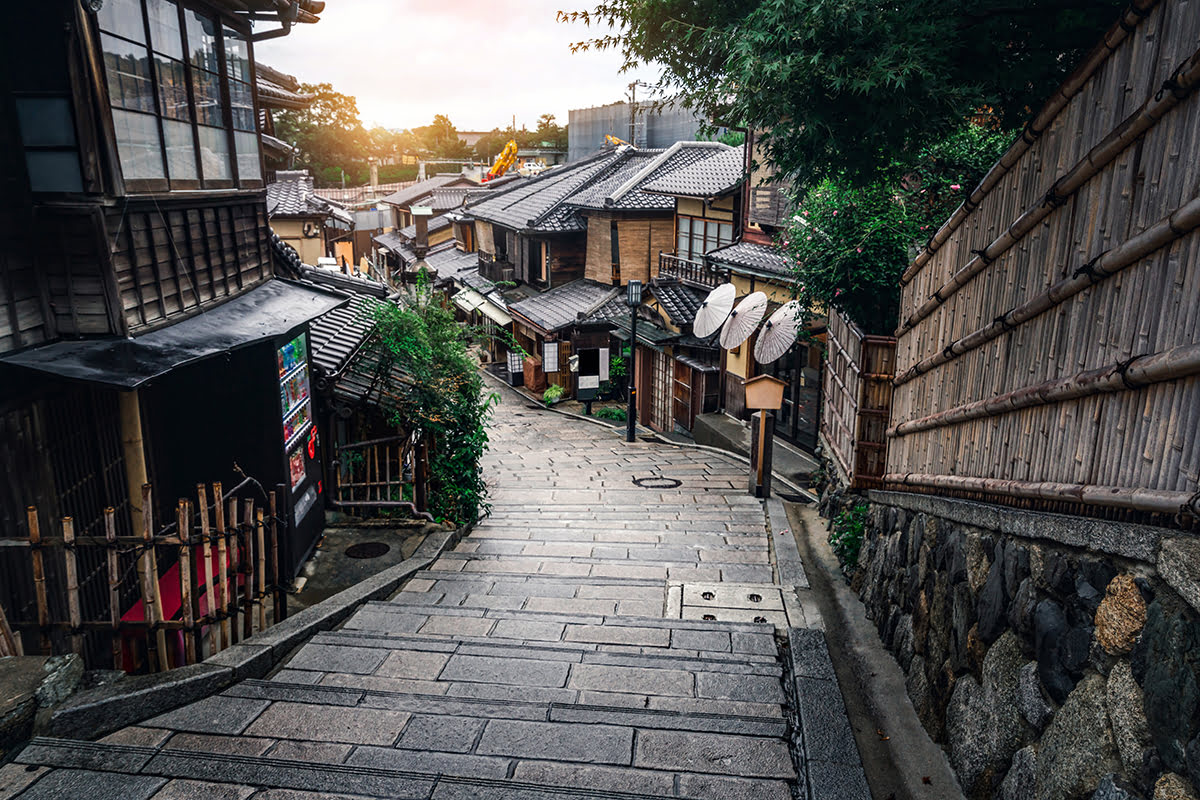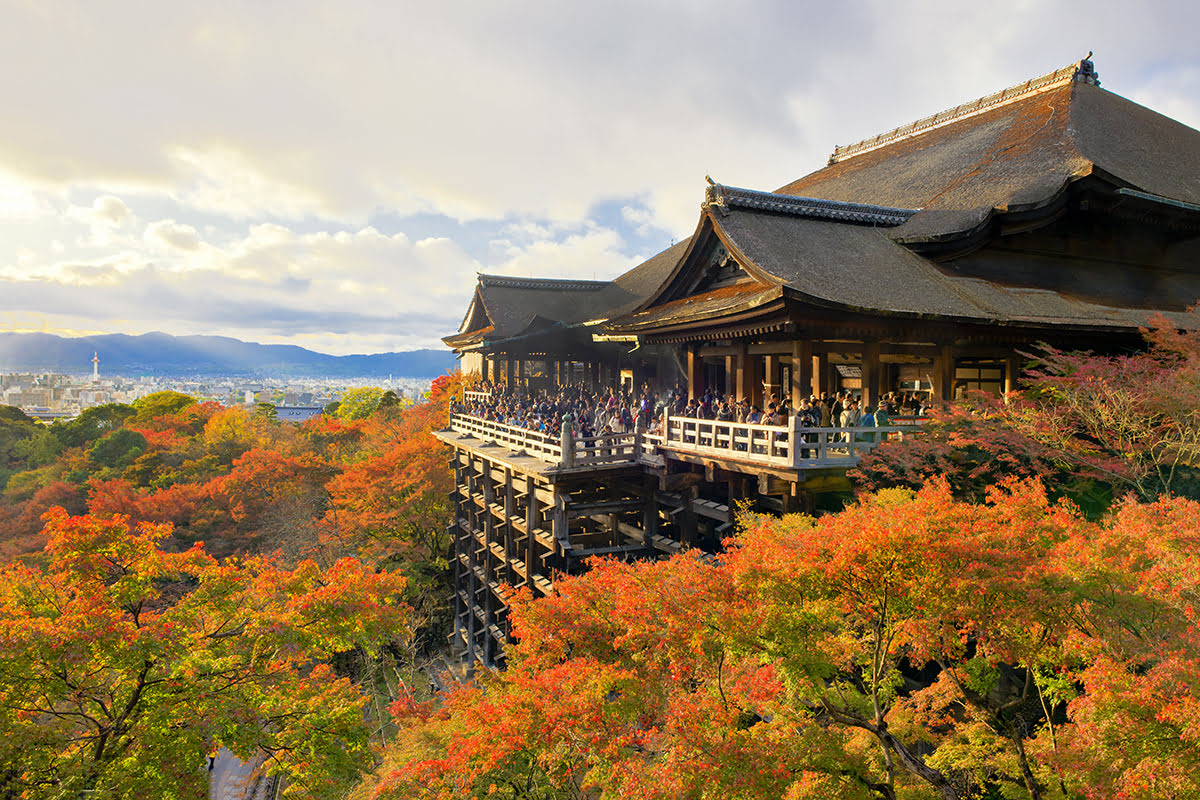Higashiyama Historic District | A Visitor’s Guide on What to See in Kyoto

Higashiyama District, also known as Higashiyama-ku, is a beautifully preserved historic district that fully captures how feudal Japan looked. This historic district is filled with traditional homes and shops, including tea houses and pottery stores, and is also home to restaurants, historical temples and shrines, and much more. Though many tourists will stop through Higashiyama during springtime when the cherry blossoms bloom, this amazing city is a great stop for any tourist looking to experience the rich culture of the area, while also getting to see what life was like during the feudal era in Japan. Located along the slopes of Kyoto’s Higashiyama, which translates to Eastern mountains, this remarkable area makes for a great visit for tourists who enjoy slowly immersing themselves in history.
EXPLORE TOURS AND ACTIVITIES IN KYOTO
The district’s charm lies not only in its architectural authenticity but also in the palpable sense of tranquility it exudes. Cobbled stone pathways meander through the area, leading visitors past meticulously maintained machiya (traditional wooden townhouses), many of which now house artisan workshops or quaint cafes. The gentle rustling of bamboo groves and the subtle fragrance of incense wafting from nearby temples create an atmosphere of serene contemplation. Kiyomizu-dera Temple, a UNESCO World Heritage site, stands as a crowning jewel with its wooden stage offering breathtaking panoramic views of Kyoto. Gion, the geisha district, borders Higashiyama where glimpses of maiko gracefully navigating the narrow streets can be caught.
Exploring Higashiyama is akin to stepping into a living museum, where each corner reveals a piece of Japan’s captivating past, making it an unforgettable journey for any traveler seeking an authentic cultural experience.
About Higashiyama Historic District
Higashiyama features beautiful traditional homes and serves as both a cultural, historical, and tourist center in Kyoto. This important neighborhood is popular with tourists and locals as, not only is it beautiful, but it is home to several prominent temples and shrines, in addition to great traditional restaurants and parks. Visitors could spend a few hours visiting the area, though careful travelers may wish to spend a day in and around the area, slowly exploring the streets and shops while sampling delicious treats, or by enjoying a kaiseki dinner, which is multicourse meals that feature traditional Japanese foods, which are exquisitely prepared and served to guests.
- Temples & festivals: There are also plenty of great shrines and temples to visit in the area, so anyone who is looking to experience Japanese culture and religions should love a stroll through this district. For an extra special trip, head to Higashiyama District during Hanatoro, which is a special event held in mid-March in Higashiyama District and mid-December in Arashiyama District. Hanatoro means “flower and light road” and during this event special lanterns illuminate the streets, casting their light on the buildings and temples of the area — perfect for photographs and beautiful memories!
- Traditional houses & coffee shops: Travelers who want to get into a machiya (traditional wooden house) should seek out restaurants and coffee/matcha shops in the area and choose their favorite. This is a great way to both get some refreshments and also see the insides of one of these amazing buildings.
- Shopping: Higashiyama District is also a wonderful place to get some shopping done, especially once visitors get closer to the entrance of Kiyomizu Temple. Here, the shops sell lovely trinkets and Japanese items that will make great gifts or souvenirs to bring home. Additionally, there are also some high-end retailers in the area that offer stunning handmade goods and art. For shoppers that have money to burn, these stores might be exactly what they’re looking for.
- Photography: Any travelers who wish to take extensive photography may wish to visit the district after dark to get the best photos possible. Not only is the area beautiful at night when it’s illuminated, but there will be fewer people around, making it easy to get that perfect shot. Visitors to the area who wish to take photos in shops or of the exteriors of some retailers should make sure to check first to see whether there are any “no photos” signs. If there are, visitors should be respectful and not take any photos of the areas that are indicated. It is also considered polite to ask the shop owner before taking a photo, regardless of whether there is a sign or not, so guests should be certain to talk to the shop owners prior to taking any photos inside of their stores.
BOOK YOUR HIGASHIYAMA WALKING TOUR HERE
Check In to The Royal Park Hotel Kyoto Sanjo, Step Out to Kiyomizu Temple

FIND & BOOK A HOTEL IN KYOTO TODAY
Best Things to Do in Higashiyama District
Unlike much of the city, Higashiyama District is unique in its beauty as it gives visitors a chance to reflect on how Kyoto looked before modern advancements. As there are few powerlines and telephone poles in the area, in addition to having a uniform architectural style, the district is remarkably beautiful. While the area is quite touristy, it is also popular for its many beautiful temples, meaning it’s also frequented by locals as well. With specialize shops, tea houses, restaurants, shrines, temples, and more, there is much to do and see within Higashiyama District and here are just some great sites that visitors can choose from.
Kiyomizu Temple
Huge and iconic, Kiyomizu Temple is one of the most famous landmarks in Higashiyama District. This multilevel, wooden temple is dedicated to the goddess Kannon and was built without the aid of nails in the traditional Japanese style. Offering spectacular views from his expansive veranda, this temple is great for scenic shots and also features a waterfall (Otowa waterfall), that is said to grant wishes to those who drink from its waters. With beautiful gardens, buildings, and surrounded by lush nature, Kiyomizu Temple is perfect for nature and history lovers and well worth a visit.
Address: 294 Kiyomizu, Higashiyama Ward, Kyoto
Entrance Fee: 400 yen for adults
Hours of Operation: Opening time for the temple is generally 6 a.m. daily. However, the closing time for the temple will depend on the time of year. Visitors should check online prior to planning their visit to confirm closing times for the temple.
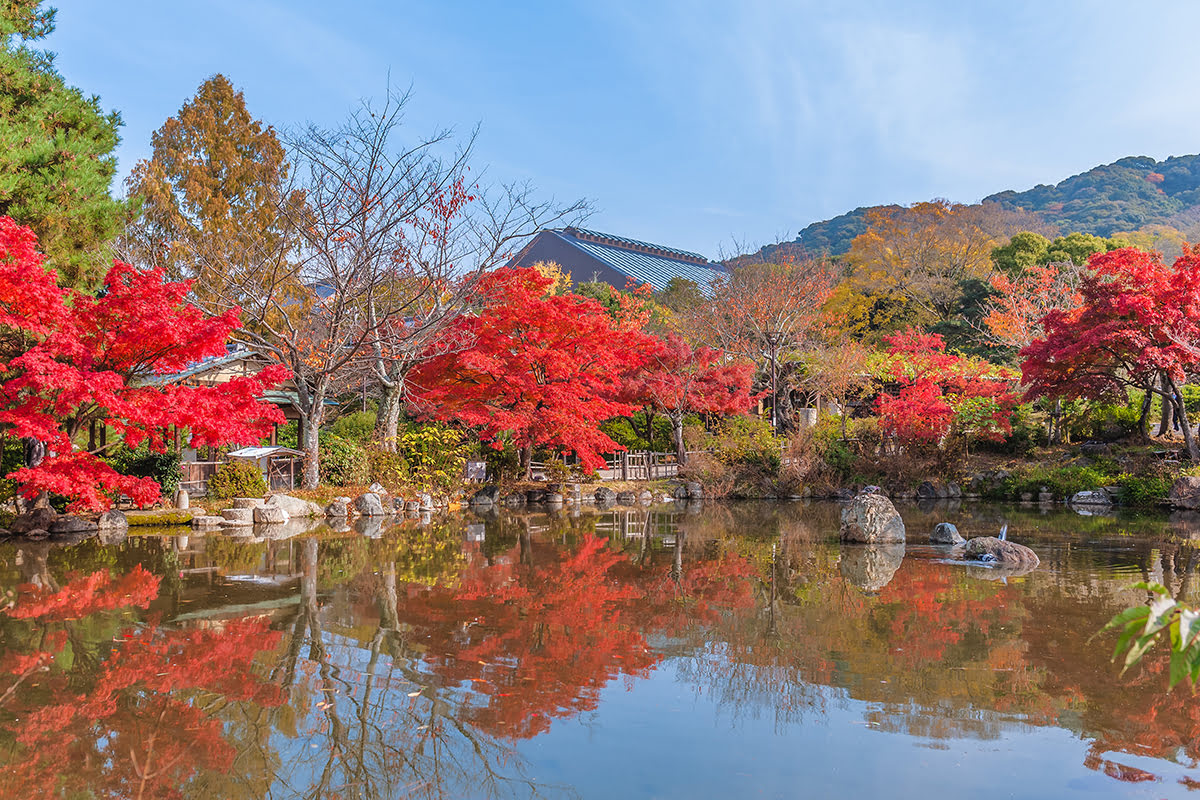
Maruyama Park
Maruyama Park is a prime location for visitors to see the cherry blossoms when they are in bloom and one of the main viewing areas in Kyoto to do so. During the cherry blossom season and during New Year’s Eve celebrations, the park will be very busy, but it’s worth venturing to when in the area. Known for its weeping cherry blossom tree (which is lit up at night), this park is also the oldest in Kyoto and is next to Yasaka Shrine, a beautiful Shinto shrine. The park is also home to gardens, orchards, small rest houses, restaurants, and more, making it a great place to sit and reflect or visit for a few hours during the day.
Address: 463 Maruyamacho, Higashiyama Ward
Entrance Fee: Free
Hours: Open 24 hours
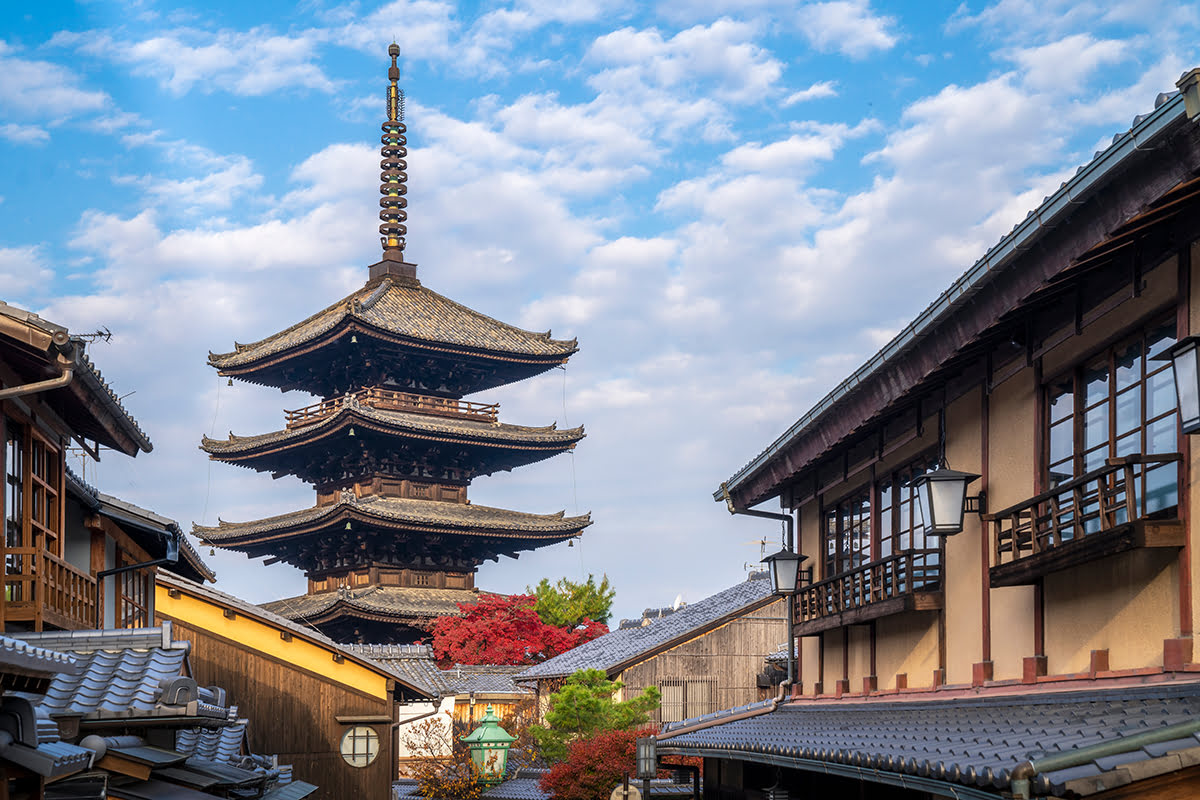
Yasaka Pagoda
Yasaka Pagoda is located on Yasaka Street in Higashiyama and is known for being one of the best places in the area to take photos, often with the pagoda as the centerpiece. The pagoda is the oldest in Kyoto and was built in 592 (though it was burnt down and eventually rebuilt in 1440) and, unlike many pagodas in Japan, visitors are able to enter into this building and can climb up to the second floor of this five-story building. Night or day, this pagoda makes for a great stop, though it is particularly beautiful when it’s lit up at night.
Address: 605-0862 Kyoto, Higashiyama Ward
Entrance fee: 400 yen
Hours: The pagoda is open from 10 a.m. to 4 p.m.
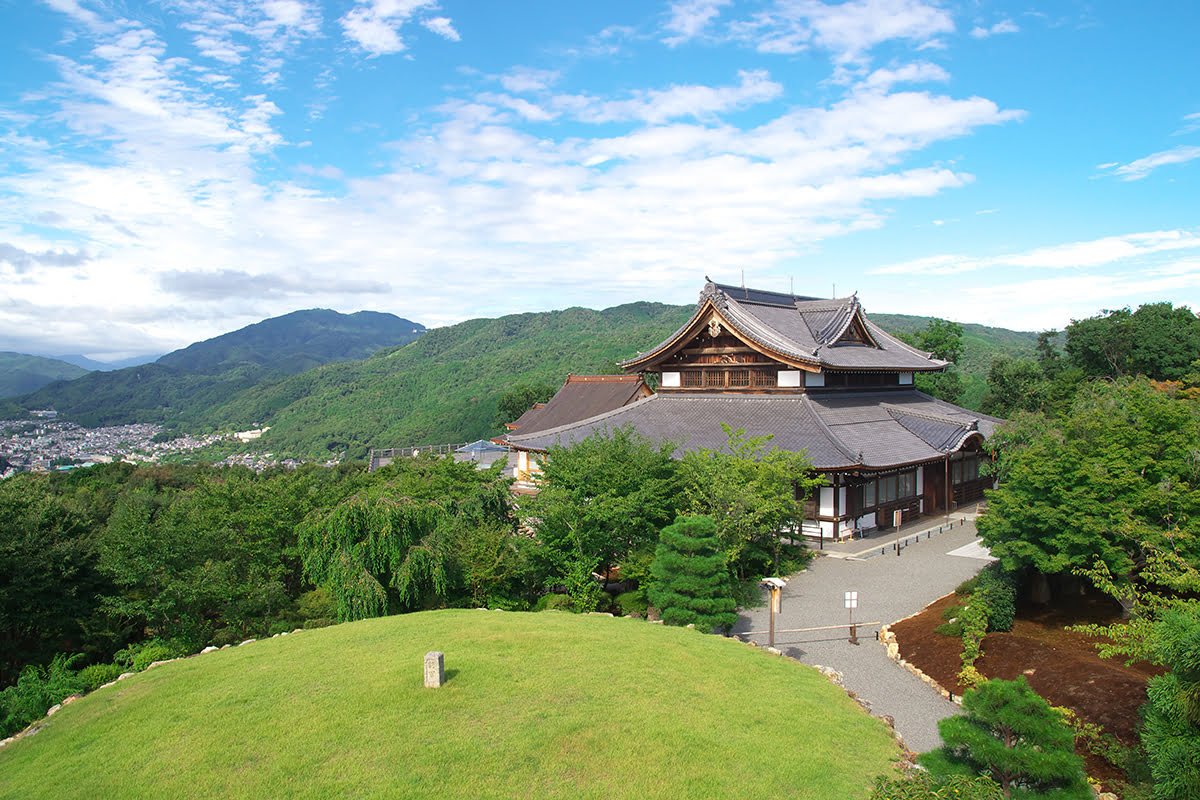
Shogunzuka Mound
Offering spectacular views of Kyoto, the Shogunzuka Mound is located on Mount Higashiyama and is reputedly the place where Emperor Kammu went in the 8th century and decided to make a new capital city. He then buried a statue of a Shogun (a general) in the mound and then prayed that the capital should experience peace. It is a beautiful spot and offers amazing views from several observation decks and gorgeous natural surroundings to enjoy. Visitors should make a trip to the observation decks near sunset for a real treat as the sun sets across the city. Shogunzuka Seiryu-den Temple is also located in the area and is open daily from 9 a.m. to 5 p.m.
Address: 28 Zushiokukachocho, Yamashina Ward
Entrance fee: Free
Hours: Open 24 hours
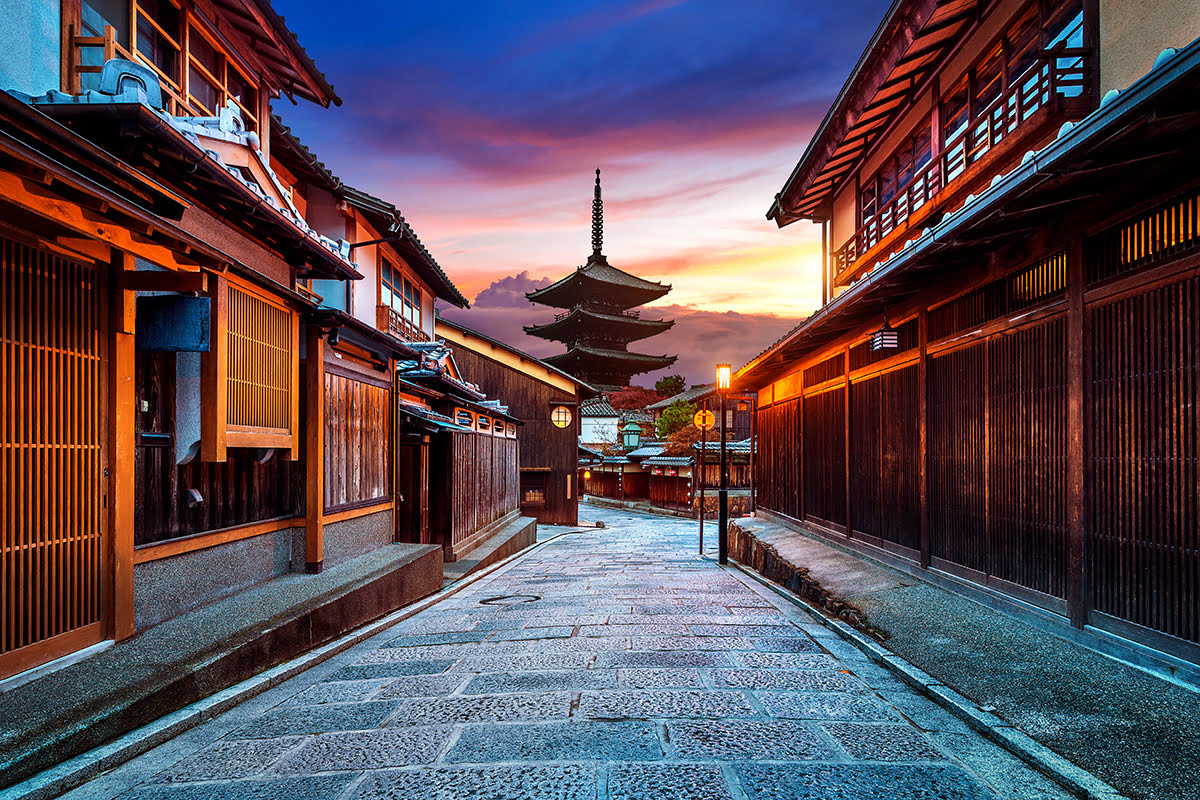
Gion District
Gion District is another historic area in Kyoto and is the city’s most famous geisha district. Geisha are actually called geiko in Kyoto, but many travelers will know them by the former name. Geisha/geiko are women who are trained in classical performing arts, including dance, art, and singing. They are known for wearing distinct makeup and kimono and are famous in this area. The word geisha means “person of art” and these women are carrying on a tradition that has long been in the area. Visitors may also see maiko, which are geisha in training and are generally younger women. It is good to remember that, when in the area, if a visitor does see a geiko or a maiko, be respectful when taking photos and, preferably, ask first.
Gion District is also home to shops, restaurants, and teahouses where geiko and maiko entertain guests. There are also lots of machiya (traditional houses) in this area, so it’s a great place to get some beautiful photos or take in a special performance by a trained performer. These teahouses, called ochaya, are very exclusive and expensive, and may not be available to tourists as many ochaya are only accessible with the invitation of an existing customer. However, some travel agencies and hotels may offer access to this special tea house experience, though it may be quite pricy. Visitors who are interested may wish to check with their hotel’s concierge while in the area to see if this is a possibility.
Address: Located near Shijo Avenue between Yasaka Shrine and the Kamo River.
Hours: Open 24 hours
Check In to Cross Hotel Kyoto, Step Out to Maruyama Park
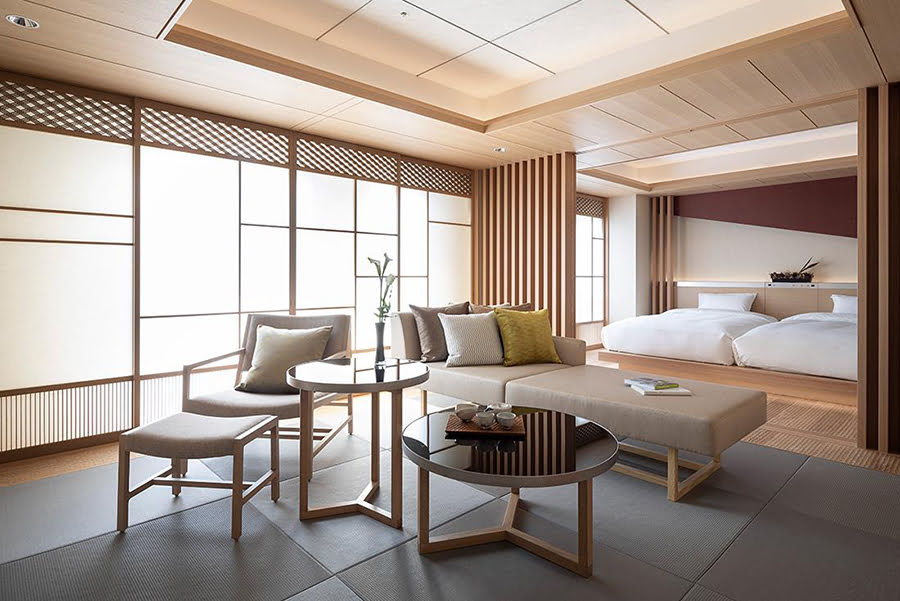
FIND & BOOK A HOTEL IN KYOTO TODAY
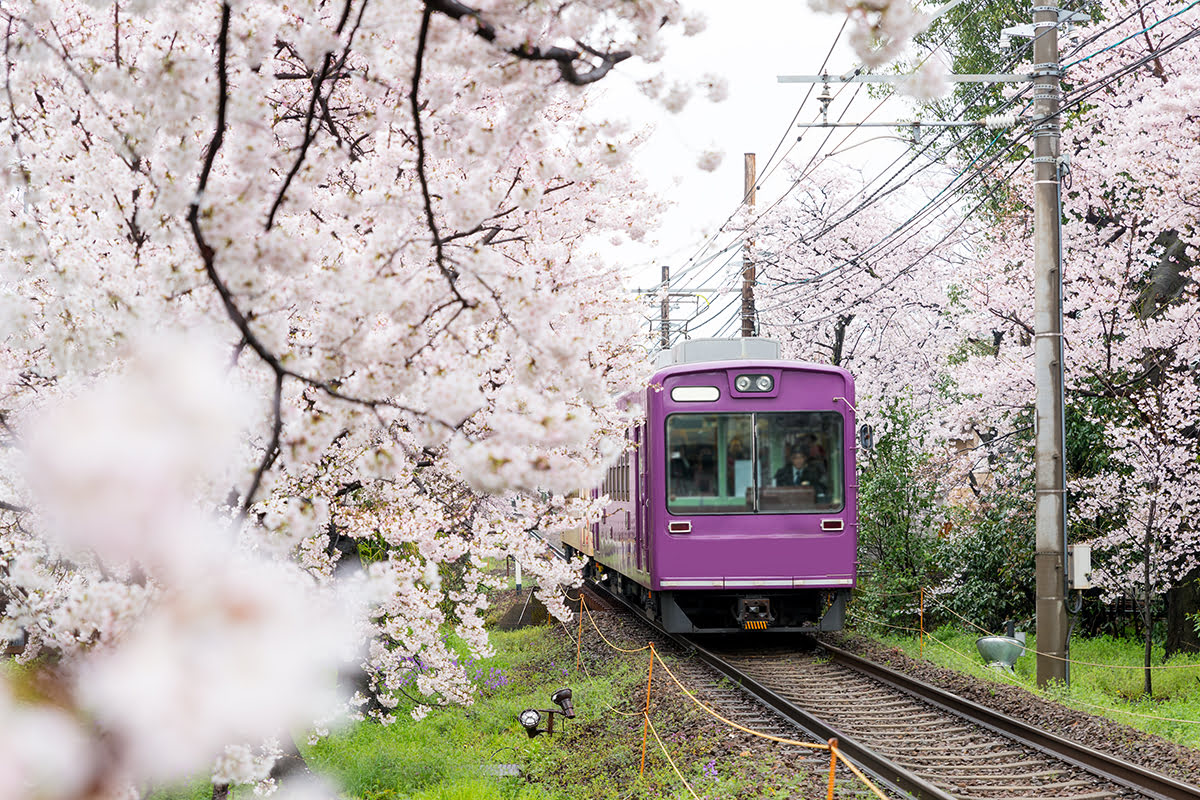
How to Get to Higashiyama District
Higashiyama District is popular and there are many ways visitors can get to this special area. For visitors who are coming from Kyoto Station, they can take the bus at the Ekimae bus stop, which is at the north exit of the station. From the station, visitors should get onto either bus 100 or 206 heading towards Kiyomizu Temple. There are multiple stops along the way where visitors can hop off at, so visitors should choose whichever stop suits their trip best, though Gojozaka bus stop is located about 10 minutes from the station, and Gion bus stop is located about 15 minutes from the station. Tickets for the bus cost about 230 yen per way.
Higashiyama District is also a quick walk away from both Kiyomizu Gojo Station or Gion-Shijo Station. From Kiyomizu Gojo Station, Higashiyama District is located 12 minutes to the southeast of the station, and from Gion-Shijo Station, it is located 22 minutes southeast from the station.
From Kyoto Kawaramachi Station, visitors can walk to Gion-Shijo Station, which is located about 3 minutes to the east and from there they can take the train to Sanjo Station where they need to transfer to Sanjo Keihan Station and then take a quick ride on the subway to Higashiyama Station. The whole trip should take less than 15 minutes. From Kyoto Shiyakusho-mae Station, Higashiyama Station is a quick ride on the Kyoto Subway and should take about three minutes.
The subway in Japan is very well run and remarkably on time. In Kyoto, there are two main lines run by the Kyoto Municipal Transportation Bureau, the north-south running Karasuma Line (green), and the east-west running Tozai Line (red). There are also many privately owned railway lines that intersect with the main subway lines and can be used to explore other parts of the city, as well as the rest of the country.
Subway fares range in price from 210 to 350 yen for adults, though there are travel cards available. Visitors may also wish to look into subway/bus combination cards that will allow them one or two days of travel access on both subways and buses. Day passes and other tickets are available at the Kyoto Tourist Information Center on the second floor of the Kyoto Station Building, at Kyoto subway stations, Kitaoji Bus Terminal, and the main entrance of Kyoto Station at the Bus Information Office.
If visitors are looking to skip public transit, taxis are readily available in Kyoto and are reasonably priced. They also can allow for easier access to some sites, as taxis are able to get closer to some sites than the subway or rail systems will be able to take visitors.
For active travelers, Kyoto is also a great city to bike ride in as it’s relatively flat and drivers, for the most part, are careful of cyclists. Bikes can be rented in shops all around the city (it’s very popular to ride bikes in the city) and this can be a quick, convenient, and inexpensive way to travel around, and also allows for easier access to some sites than a car or subway. Be sure to park any rented bikes in designated areas as bikes that are not may be removed by the city. Most attractions will have designated bike lots for cyclists to park their bikes at and some will charge a small fee (between 100 to 200 yen) for parking.
Check In to Dhawa Yura Kyoto – Banyan Group, Step Out to Kyoto

You may also like

Tigers, Whale Sharks & Jungle Giants: Discover Southeast Asia’s Wild Side
Southeast Asia might just be one of the world’s best-kept secrets for nature lovers. With elusive tigers roaming ancient rainforests and whale sharks gliding through coral-rich seas, this region is teeming with biodiversity, but it’s often overlooked as a wildlife destination. In this guide, we’ll highlight some of Southeast Asia’s most unforgettable wildlife encounters and how your trip can support the protection of the places, people, and species that make this region so unique.

Travel Advisories for Indian Travelers
Indian travelers are advised to check this website before traveling abroad: Ministry of External Affairs Travel Advisory Travel advisories are issued by …
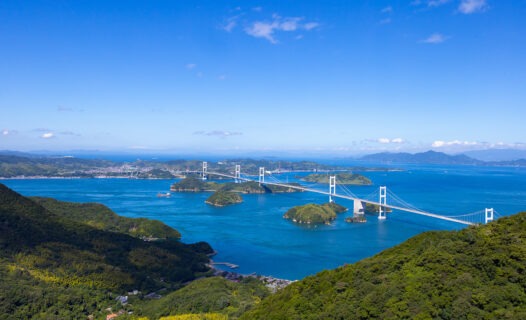
Feel Revived by Cultural Activities & Hot Springs on a Trip to Ehime
Ehime Prefecture offers an abundance of nature and culture. It is full of exciting sea and mountain activities, such as cycling the 70 km Shimanami Kaido route around the islands in the Seto Inland Sea, trekking the Shikoku Pilgrimage, and climbing Mt. Ishizuchi—the highest peak of western Japan. You can also relax at Dogo Onsen, one of Japan’s most famous hot spring areas, or explore Ehime’s historical spots, like Matsuyama Castle and the Edo Period towns. It takes around 30 minutes to travel from Matsuyama Airport to Matsuyama City by airport bus. And with trams that travel within Matsuyama City and to Dogo Onsen, accessing tourist attractions around the area couldn’t be easier!
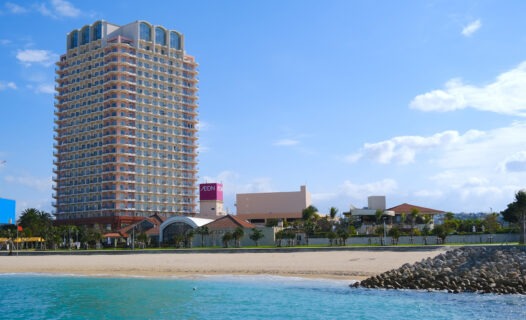
Your ultimate Okinawan getaway awaits! Discover, relax, and indulge at The Beach Tower Okinawa
This article is sponsored by “Kyoritsu Maintenance Co., Ltd.” Presented by Kyoritsu Maintenance Co., Ltd. / The Beach Tower Okinawa Chatan Town …
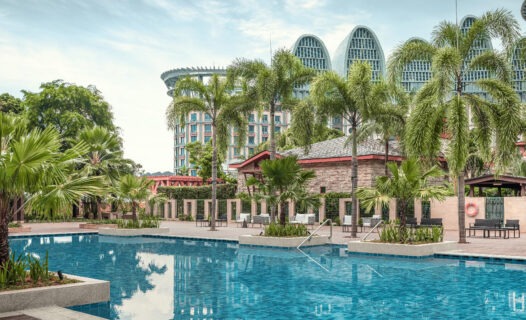
Best Hotels in Singapore: Top Stays for Luxury, Leisure, and Everything In Between
Where you stay in Singapore will play a big role in how you experience the city. Here is a look at some of the best hotels in Singapore highlighting standout stays across the city and Sentosa Island. From stylish urban retreats to family-friendly resorts, you’ll find top-notch options to match your itinerary, travel style, and budget.
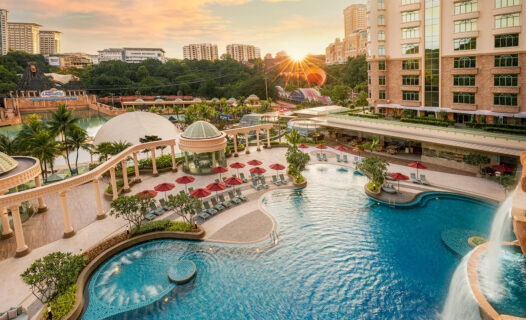
Best Hotels in Malaysia: Where to Stay Across the Country
From buzzing city centers to tropical coastlines, Malaysia is a country that caters to every kind of traveler with every kind of hotel. Here’s a roundup of some of the top hotels in Malaysia that combine excellent locations, great amenities, and real value, helping you narrow down where to stay in Malaysia no matter your travel style or budget.

Top Hotels in Hong Kong: Best Places to Stay Across the City
Whether you’re visiting Hong Kong for the vibrant food scene, high-rise shopping districts, or a peaceful escape in the outlying islands, choosing the right place to stay can elevate your entire experience. This roundup of the top hotels in Hong Kong brings together stylish urban retreats, conveniently located business hotels, and relaxing escapes, all with easy access to the city’s most iconic spots. If you’re wondering where to stay in Hong Kong, these top picks are a great place to start.

Best Hotels in Taiwan: Top Picks for Every Type of Traveler
Whether you’re drawn to Taiwan for its street food, hiking trails, or vibrant cultural history, finding the right place to stay can make your trip even more memorable. The best hotels in Taiwan offer more than just a place to sleep; they help complete the whole experience. Whether you’re staying for a weekend or a few weeks, these hotel recommendations will help you find the right fit for your travel style.
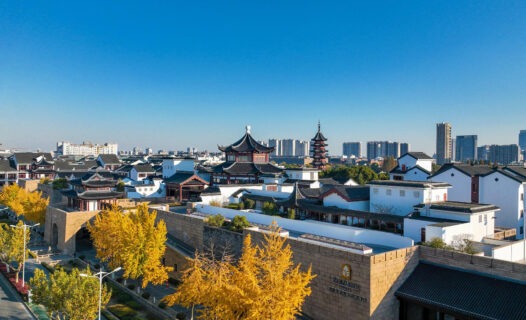
Best Hotels in China: Top Stays from Shenzhen to Suzhou
From tech-forward business hubs in Shenzhen to scenic water towns like Suzhou, this overview of the best hotels in China will help you figure out where to stay in China, no matter your travel style. With options ranging from sleek skyscraper suites to tranquil garden resorts, there’s truly something for everyone.

What to Buy in Seoul: Shop in Myeongdong, Namdaemun & More!
Indeed, the shopping scene is legendary in South Korea, and knowing what to buy in Seoul is key to planning a fantastic …
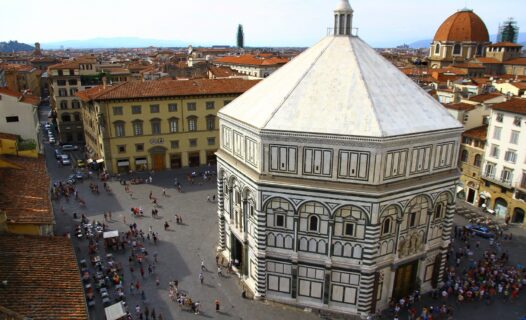
Discover 10 Fun Things to Do in Florence Beyond the Tourist Trail
Discover 10 unforgettable experiences in Florence beyond the tourist trail. Uncover hidden gems and local favorites—start your adventure today!
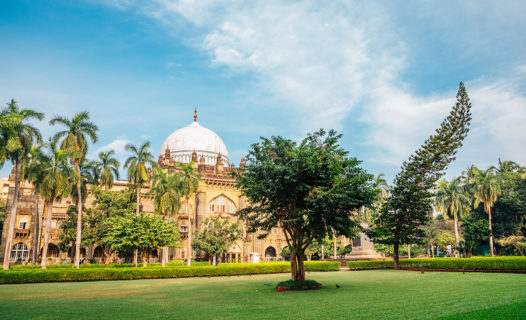
Discover 10 Fun Places to Visit in Mumbai with Friends
Discover the ultimate Mumbai adventure! Explore 10 fun-filled places to visit in Mumbai with friends and create unforgettable memories. Start your journey now!

Chill Out in Goa: Explore the Best Snow Park Experience
Discover the ultimate snow park experience in Goa! From thrilling rides to family fun, explore our guide and plan your perfect chill-out day.

Discover Where Sinulog Festival is Celebrated in Cebu!
Discover where the Sinulog Festival is celebrated in Cebu, Philippines! Join the vibrant festivities and immerse yourself in this unforgettable cultural experience.
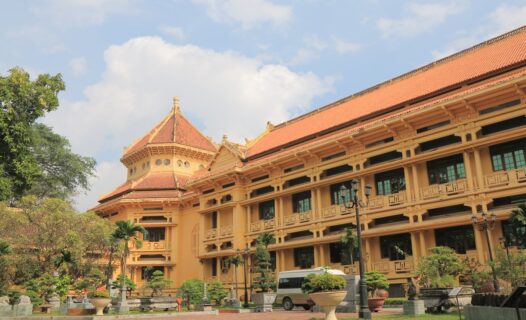
Discover Hanoi's Military History Museum: Fun & Adventure!
Discover the captivating tales at Hanoi's Military History Museum! Dive into a fun day of learning and adventure—plan your visit now!

Capture Lory Park Zoo Photos: Your Ultimate Johannesburg Guide
Capture unforgettable moments at Lory Park Zoo! Discover tips for stunning lory park zoo photos and make your Johannesburg adventure memorable. Click to learn more!

Discover Mumbai's Famous Places: Top 10 Epic Adventures
Discover Mumbai's famous places that promise an epic adventure! Explore our top 10 must-visit spots and start planning your unforgettable journey today!
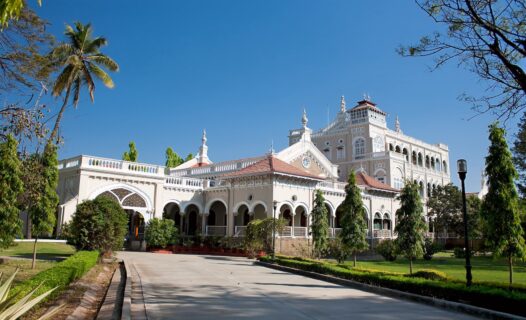
The Aryavart Escape: Snap Stunning Panshet Photos in Pune
Discover the Aryavart Escape and capture stunning Panshet photos on your Pune getaway! Dive into our guide for tips and breathtaking spots. Start your adventure now!

Explore Hanoi's Train Street: Coffee & Scenic Journeys
Discover the charm of Hanoi's Train Street! Join us for a day of thrilling train sightings and delightful coffee sips. Click to explore this unique experience!

Swim with Sharks at Dubai Aquarium: An Unforgettable Adventure
Dive into adventure at the Dubai Aquarium! Discover the thrill of swimming with sharks and make unforgettable memories. Plan your visit today!
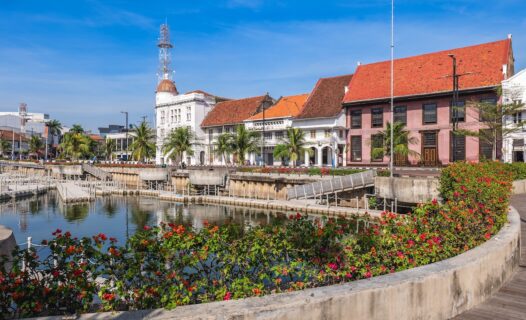
Central Jakarta: Discover Street Eats & Hidden Cafés
Discover Central Jakarta's vibrant food scene! Dive into street eats and hidden cafés that will tantalize your taste buds. Start your culinary adventure now!
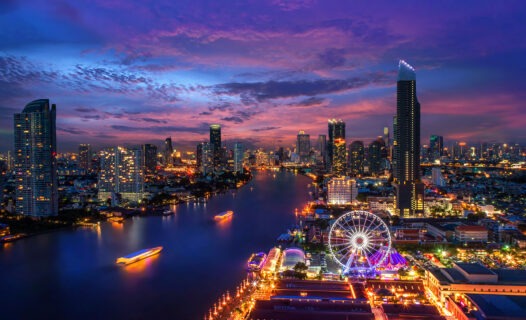
Discover 10 Quirky Bangkok Things to Do That Will Make You Smile
Discover Bangkok's quirky side with 10 unusual things to do that will make you smile. Dive into the fun—explore now for a unique adventure!
